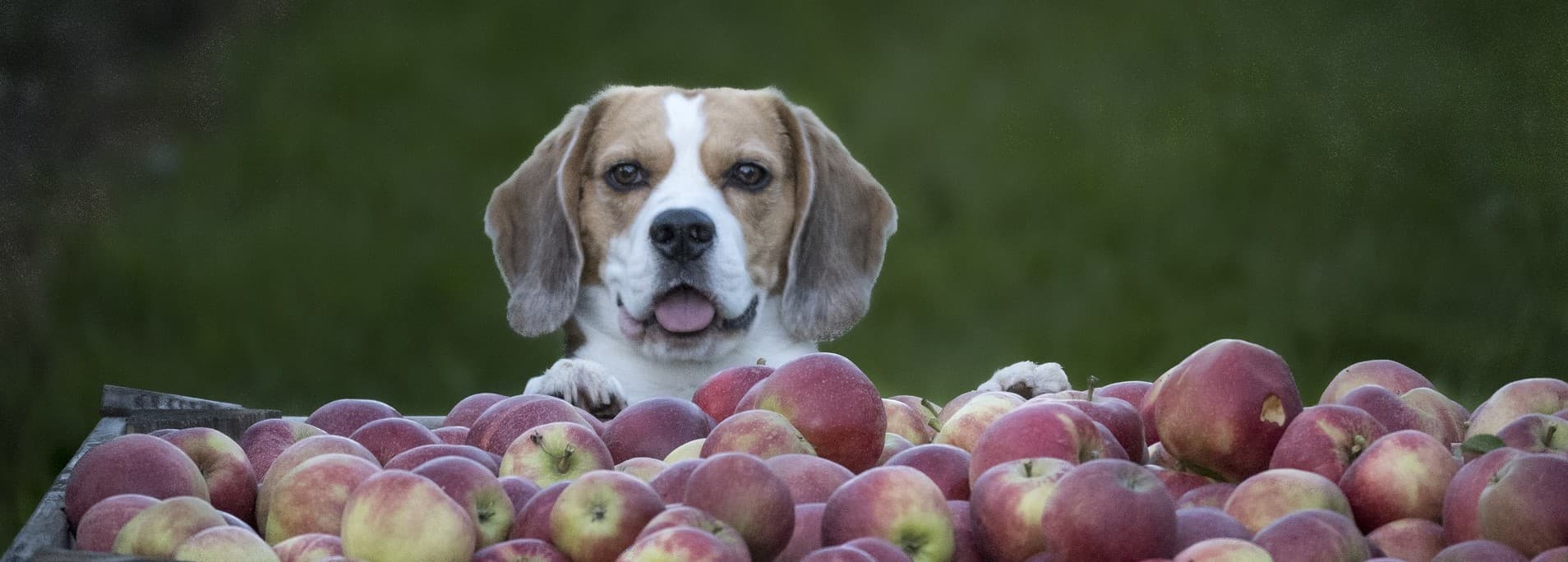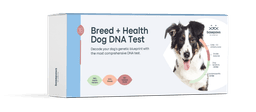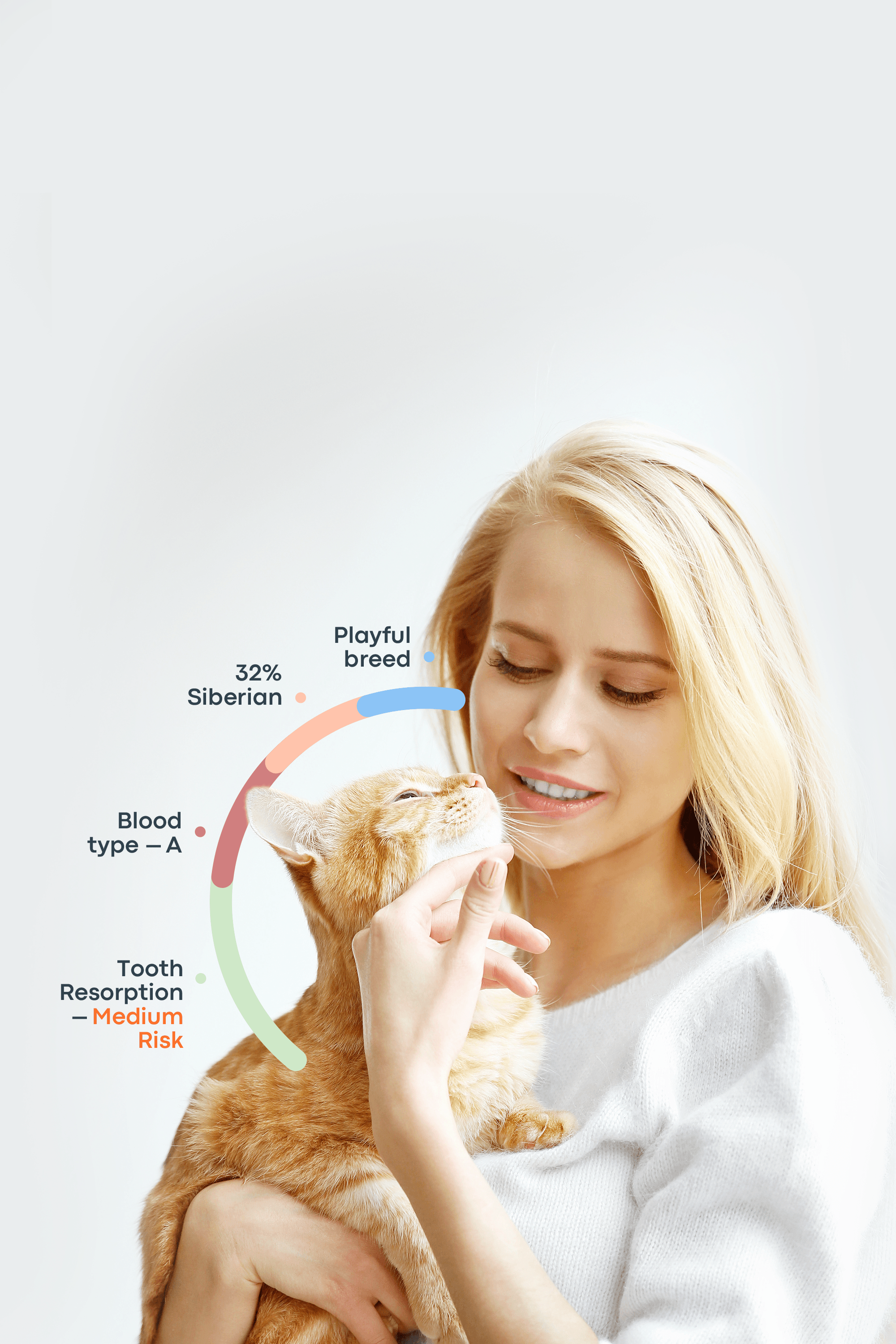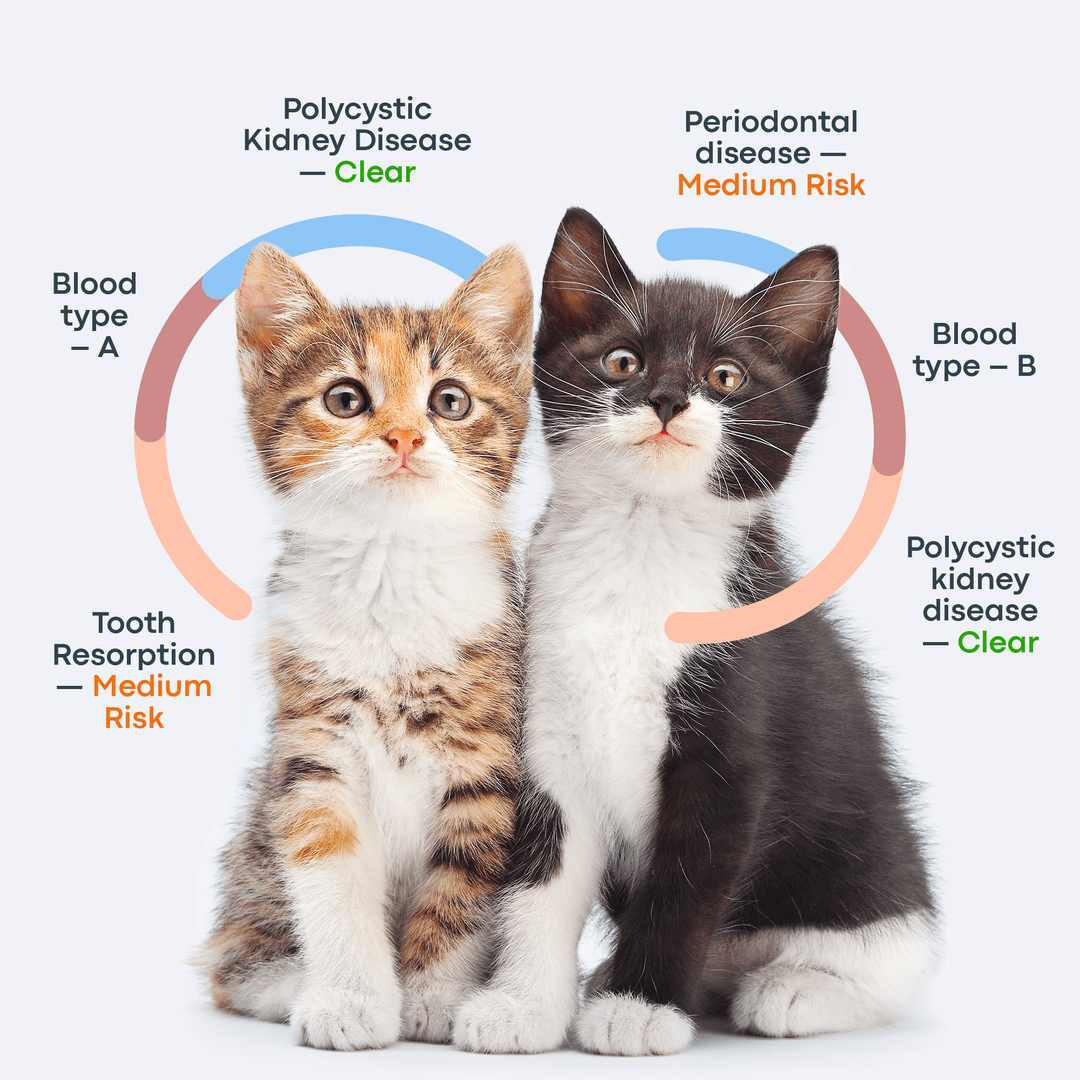Many dog owners wonder if it’s safe to share apples with their pets. Can dogs eat apples? The answer is yes — apples can be a healthy, low-calorie treat when prepared correctly. They’re packed with vitamins, fiber, and natural sweetness that most dogs love. However, parts like the core and seeds should always be removed, as they can be harmful if eaten. With the right preparation and portion size, apples can be a simple, wholesome addition to your dog’s snack list.
Can Dogs Eat Apples?

Yes — dogs can safely enjoy apples when they’re prepared the right way. Most varieties, including Red Delicious, Granny Smith, and Honeycrisp, are perfectly safe and packed with vitamins, fiber, and antioxidants that support your dog’s health.
You can serve apples raw or cooked, as long as they’re plain and free from added sugar, spices, or condiments. The healthiest option is simple: clean, seed-free apple slices served in moderation.
Whenever possible, choose organic or pesticide-free apples and wash them thoroughly to remove any dirt or residue. Some dogs may find certain varieties too tart, so start with a small piece to see how your pup reacts — especially if it’s their first time trying this fruity treat.
Are Apples Good for Dogs?
Yes, apples can be an excellent and nutritious snack for dogs when served properly. According to the American Kennel Club (AKC), apples are rich in fiber, vitamins, and antioxidants that support your dog’s overall health.
The key nutrients in apples include fiber, carbohydrates, and water. Fiber helps keep your dog’s digestive system healthy by promoting regular bowel movements and preventing constipation. Apples also provide vitamin C and potassium — two essential nutrients that boost immunity, support tissue repair, and promote heart health.
In addition, apples contain powerful antioxidants such as quercetin, catechin, and chlorogenic acid. These compounds help protect cells from oxidative stress, may reduce inflammation, and can even support long-term heart and joint health.
Key Health Benefits
Digestive health: The fiber in apples promotes healthy digestion and helps regulate bowel movements.
Immunity: Antioxidants and vitamin C work together to support immune defenses and reduce the effects of aging.
Dental health: Crunchy apple slices can gently scrub teeth, helping reduce plaque buildup and freshen breath — though they don’t replace regular brushing.
Weight management: Apples are low in calories and high in water and fiber, making them an ideal, filling treat for dogs on a weight-control diet.
Taste & Texture
Most dogs enjoy apples for their natural sweetness and satisfying crunch. The crisp texture helps keep them engaged while chewing, and the mild flavor makes apples appealing to even picky eaters. Try serving a few chilled slices on a warm day or mixing small pieces into your dog’s regular food for a refreshing twist.
Are There Any Risks of Feeding Apples to Dogs?

Many dog owners wonder, “Are apples bad for dogs?” Generally, apples are safe when prepared properly, but certain parts can be harmful if fed incorrectly.
Can dogs eat apple seeds?
No. According to PetMD, apple seeds contain trace amounts of cyanide, which can be toxic if consumed in large quantities or over time. Even a few seeds aren’t usually harmful, but it’s best to remove all seeds before offering apples to your dog.
Can dogs eat apple cores?
No. The core is hard and can pose a choking hazard or cause intestinal blockages. It also contains the seeds, which, as mentioned, contain small amounts of cyanide. Always remove the core completely before serving.
Can dogs have apple skin?
Yes, the skin is safe and contains additional fiber and nutrients, but it should be washed thoroughly to remove dirt, pesticides, or residues. For dogs with sensitive stomachs, it may be best to peel the apple to avoid digestive upset.
Tip: Even safe parts of the apple should be served in moderation. Too much fruit can lead to stomach upset or diarrhea due to natural sugar and fiber content.
When Apples Are Not Suitable
Can dogs have apples if they have certain health issues? While apples are safe for most dogs, they may not be appropriate for pets with some health conditions. Avoid feeding apples if your dog has:
Allergies or sensitive stomachs: Dogs with food allergies or gastrointestinal sensitivities may experience vomiting, diarrhea, or discomfort after eating apples.
Diabetes: Apples contain natural sugars, which can cause blood sugar spikes in diabetic dogs. Treats should be carefully monitored or avoided altogether in these cases.
Tip: Always consult your veterinarian before introducing any new food to dogs with existing health issues.
Avoid Sugary Apple Treats
Many dog owners wonder, “Are apples safe for dogs?” when served in pies, desserts, or other human treats. The answer is no — these foods often contain added sugar, spices, or other ingredients that can be harmful to dogs.
Some desserts include spices like nutmeg, which is particularly dangerous. According to the Garden State Veterinary Specialists, nutmeg contains myristicin, a compound that can cause seizures, tremors, disorientation, and other serious health issues even in small amounts.
Tip: Stick to plain, fresh apples as treats, and avoid giving your dog any baked goods or sweetened snacks containing apples.
Signs of Overfeeding Apples
Although apples are healthy in moderation, too many can upset your dog’s digestive system. Common signs of overfeeding include:
Gas or bloating
Diarrhea or loose stools
Decreased appetite
Mild vomiting
Tip: Always offer apples in small portions and monitor your dog’s response, especially when introducing this fruit for the first time. Moderation is key to keeping your pup happy and healthy.
How Much Apple Can a Dog Eat?
Responsible pet parents want to ensure their dogs have apples in a healthy, safe way that benefits digestion and nutrition. To keep apples a healthy treat, portion size and frequency are important. As a general guideline, treats — including apples — should make up no more than 10% of your dog’s daily calories.
For most dogs, 1–2 thin slices of apple at a time is sufficient. It’s not necessary to offer apples every day; giving them a few times a week is enough to provide a tasty, nutritious snack. Overfeeding fruit, even healthy options like apples, can lead to stomach upset or digestive issues.
Dog Size | Suggested Portion | Feeding Frequency | Notes |
Small dogs (under 20 lbs / 9 kg) | 1–2 thin slices | 1–2 times per week | Start with a small piece to test tolerance. |
Medium dogs (20–50 lbs / 9–23 kg) | 2–4 thin slices | 1–2 times per week | Adjust portion to activity level and diet. |
Large dogs (over 50 lbs / 23 kg) | 4–6 thin slices | 1–3 times per week | Avoid daily feeding to prevent stomach upset. |
Tip: Introduce apples gradually, observe your dog’s reaction, and adjust portion sizes based on their size, age, and overall diet.
Can Dogs Eat Different Types of Apples?

Can dogs eat apples of different varieties? Yes, dogs can safely enjoy apples of all colors and varieties, as long as you remove the seeds and core. Each type varies slightly in taste, sugar content, and fiber level, but all can be a healthy snack when offered in moderation.
Can dogs eat green apples?
Yes. Green apples are tangy and slightly less sweet, containing about 8–10 grams of sugar and 2–3 grams of fiber per 100 grams. Their crisp texture and tart flavor make them a refreshing, lower-sugar option for dogs that enjoy a sour taste.
Can dogs have red apples?
Yes. Red apples, such as Red Delicious or Fuji, are sweeter and tend to be more appealing to most dogs. They contain around 10–13 grams of sugar and 2–2.5 grams of fiber per 100 grams, making them a juicy, flavorful treat.
Can dogs have Granny Smith apples?
Yes. Granny Smith apples are firm, mildly sour, and contain about 8–9 grams of sugar and 2.8–3 grams of fiber per 100 grams. Their lower sugar and higher fiber make them an excellent choice for dogs that need a lighter, healthier option.
In short, all apple varieties are safe for dogs when served plain, seed-free, and in moderation. Choose the type that best suits your dog’s taste preferences and nutritional needs.
Apple Variety | Flavor & Texture | Sugar (per 100g) | Fiber (per 100g) | Best For |
Green apples | Tart, crisp | 8–10 g | 2–3 g | Dogs that prefer tangy flavors or need less sugar |
Red apples | Sweet, juicy | 10–13 g | 2–2.5 g | Dogs that enjoy a sweeter taste |
Can Dogs Have Dried Apples or Applesauce?
Yes, dogs can enjoy dried or blended apples as long as they’re completely natural and free from added sugar, salt, or artificial ingredients.
Can dogs have dried apples?
Yes — but only if they’re plain and unsweetened. Many store-bought dried apple snacks contain added sweeteners or preservatives such as sulfites, which can upset your dog’s stomach or trigger allergies. Homemade dehydrated apple slices are a much safer alternative and make a crunchy, nutritious treat your dog will love.
Can dogs eat applesauce?
Yes, but it must be plain and unsweetened. Avoid commercial applesauce with added sugar or artificial sweeteners — especially xylitol, which is toxic to dogs.
Homemade applesauce is the best option. Simply puree peeled apples and serve a small spoonful occasionally. For a fun twist, try freezing applesauce into cubes, mixing it with plain yogurt, or stuffing it inside a KONG toy for a cool, enriching treat.
How to Safely Prepare Apples for Dogs
Proper preparation ensures apples are safe and healthy for your dog. Follow these simple steps:
Wash thoroughly: Rinse apples under running water to remove dirt, bacteria, and pesticide residue.
Remove seeds, core, and stem: These parts can be choking hazards and contain trace amounts of cyanide.
Cut into small pieces: Slice or cube the apple into bite-sized chunks to prevent choking.
Peel if needed: Remove the skin if your dog has a sensitive stomach or digestive issues.
Serve creatively:
Offer apple cubes as fresh snacks.
Sprinkle small pieces over your dog’s regular meals.
Freeze apple chunks or purée in a KONG toy for enrichment.
Dehydrate slices into crunchy apple chips for a long-lasting treat.
Apple Dog Treat Recipe
Try this baked apple and carrot treat, recommended by Zoetis, as a healthy snack for your dog.
Ingredients
1 cup grated apple
1¼ cups grated carrots
1¼ cups quick-cooking oats
½ cup natural peanut butter (xylitol-free)
2 eggs
Instructions
Preheat the oven to 350°F and line two baking sheets with parchment paper.
In one bowl, mix the grated apple, carrots, and oats. In another, whisk the peanut butter and eggs until smooth.
Combine everything and stir well.
Drop 1½ teaspoonfuls of batter onto the baking sheet and flatten to ½-inch thick.
Bake for 15-20 minutes or until golden brown and firm. Let them cool before serving.
Final Thoughts
Can dogs eat apples? Absolutely. Apples are a delicious, vitamin-rich treat that can add variety and nutrition to your dog’s diet when served properly. Always remove the seeds and core, offer them in moderation, and watch for any signs of digestive discomfort.
If you’re ever unsure about introducing new foods, consult your veterinarian first. With safe and mindful feeding, apples can be a simple way to keep your pup both healthy and happy.
Frequently Asked Questions
Are apples bad for dogs?
No, apples aren’t bad for dogs when fed properly. They’re safe, healthy, and nutritious as long as you remove the seeds and core and serve them in moderation.
Can dogs eat apples every day?
Dogs can have apples occasionally, but they don’t need them daily. Offering small portions a few times a week is enough to provide a tasty, vitamin-rich snack without upsetting their stomach.
Do dogs like apples?
Many dogs enjoy apples for their natural sweetness, crisp texture, and refreshing juiciness, though some may prefer certain varieties more than others.
How much apple should I give my dog?
A slice or two per day is plenty for most dogs. Adjust the portion based on your dog’s size, diet, and overall calorie needs.
Can dogs eat apples with the skin?
Yes. Dogs can safely eat apples with the skin, as long as it’s washed thoroughly to remove dirt, pesticides, and residue. For sensitive stomachs, peeling the skin may help.
What fruit can't dogs eat?
Avoid fruits like grapes, raisins, cherries, avocados, and tomatoes, as they can be toxic or cause digestive issues in dogs.
Reference List
https://www.akc.org/expert-advice/nutrition/can-dogs-eat-apples/
https://gsvs.org/blog/can-dogs-have-nutmeg-emergency-toxicity/
https://www.zoetispetcare.com/blog/article/apple-dog-treat-recipe



